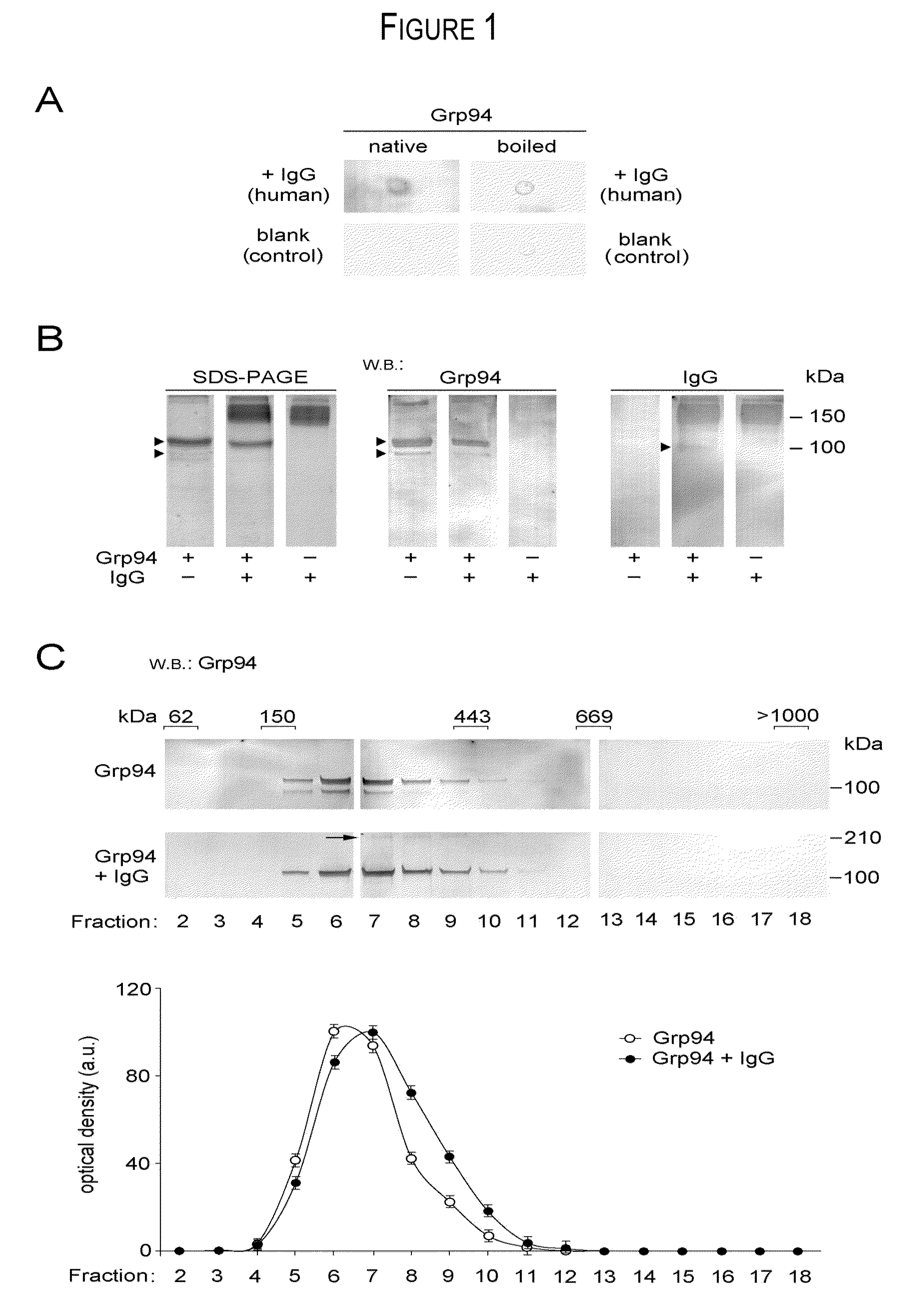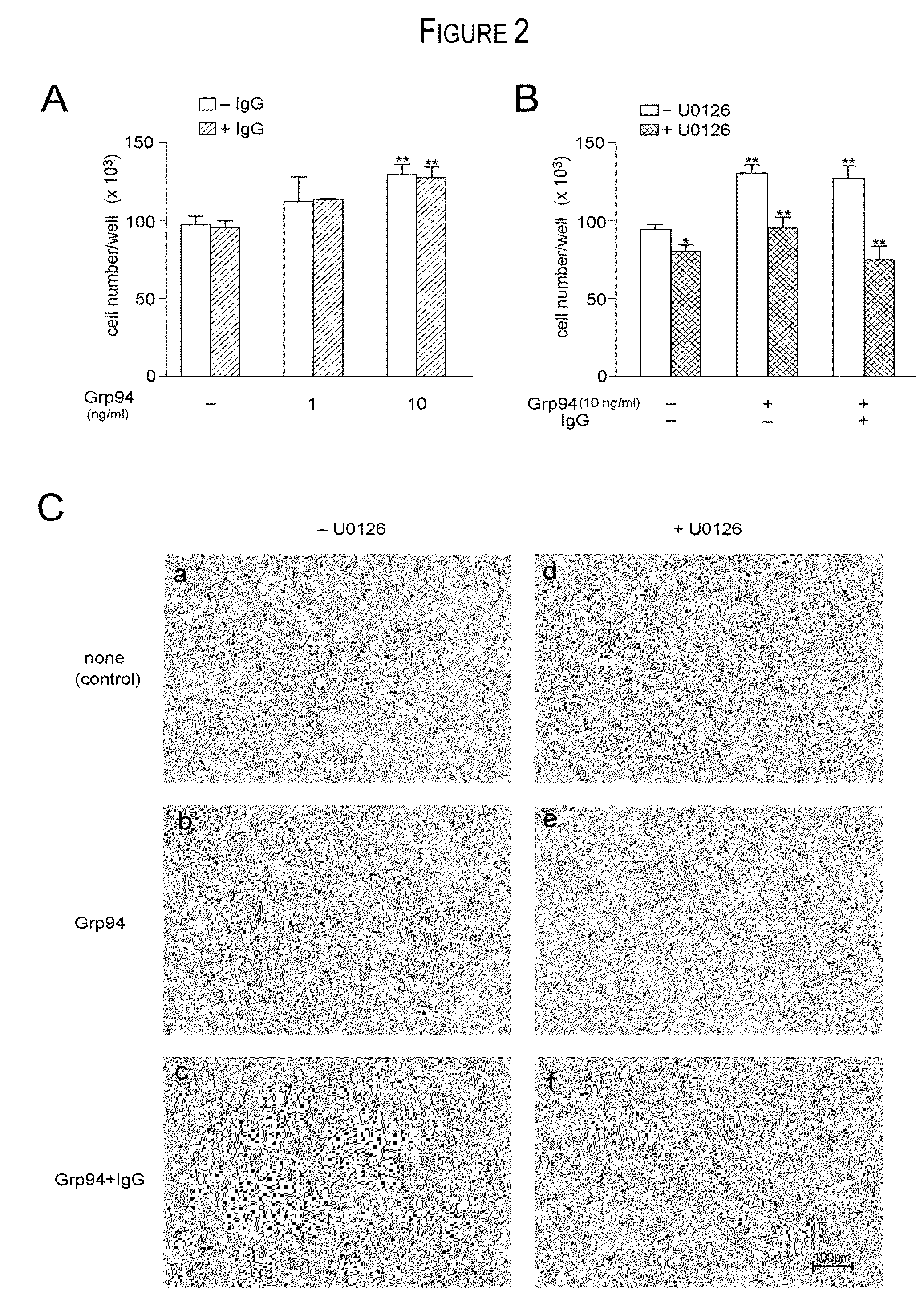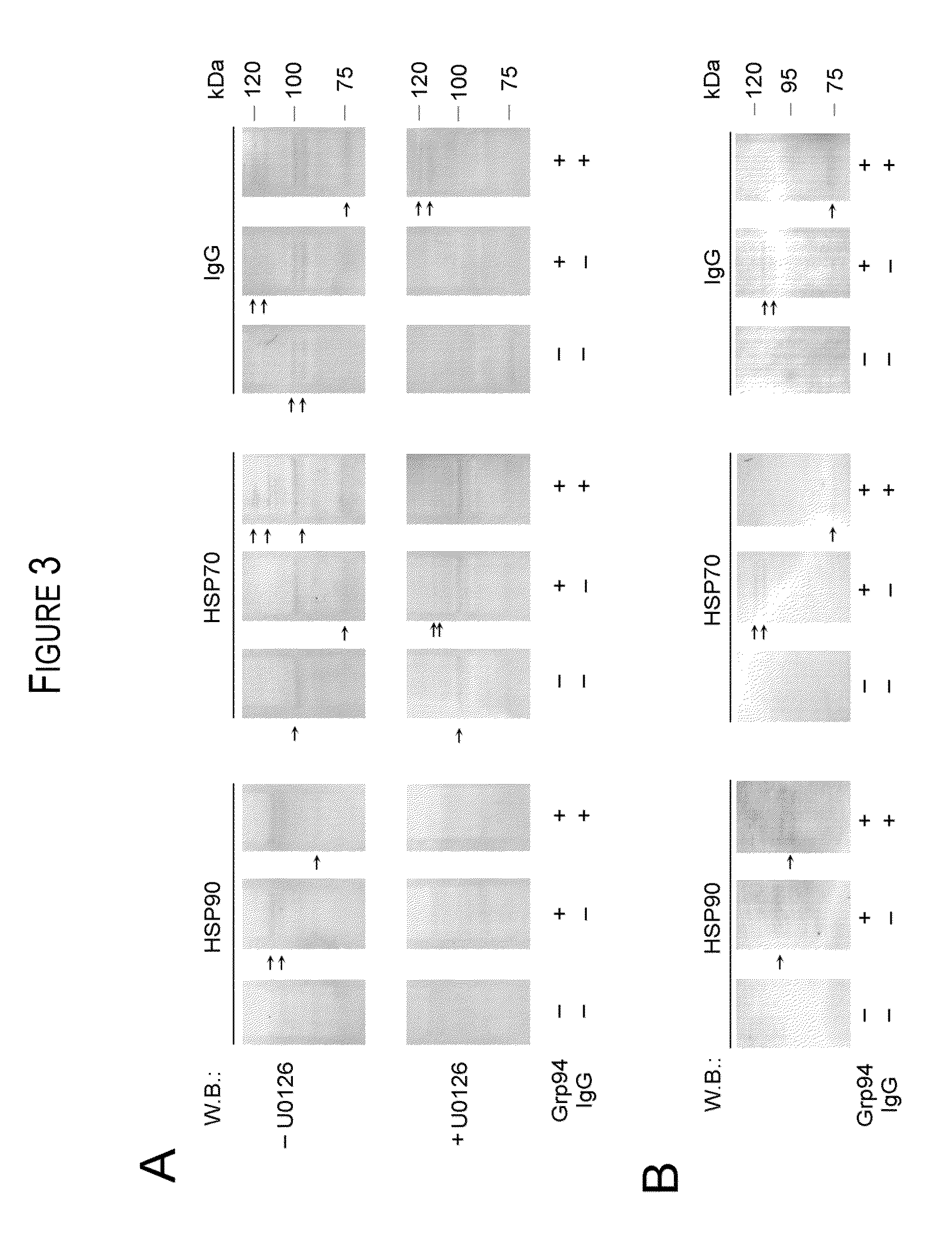Complexes of grp94 with human immunoglobulin g
- Summary
- Abstract
- Description
- Claims
- Application Information
AI Technical Summary
Benefits of technology
Problems solved by technology
Method used
Image
Examples
Embodiment Construction
[0027]The experiments aimed at obtaining the formation of Grp94-IgG complexes in vitro originated from the necessity to reproduce, in a simplified experimental model, the complex condition of native, immune complexes found in ex vivo experiments of purification from diabetic plasma. If complexes similar to those found in vivo between Grp94 and IgG could also form in vitro, then, it was possible to study in detail the mechanism(s) by which Grp94 and IgG, both singularly and combined together, displayed their effects on HUVECs, taken as a model of endothelial vascular cells. It is clear, however, that marked differences exist between the in vitro and in vivo conditions that affect the formation of Grp94 and IgG complexes.
[0028]Differences are:[0029]1) Grp94 used in experiments in vitro is obtained from the microsomal fraction of rat hepatocytes. Although antigenic sites in rat Grp94 are similar to those of human native Grp94 (anti-Grp94 Abs recognize both human plasma and rat Grp94), ...
PUM
| Property | Measurement | Unit |
|---|---|---|
| Temperature | aaaaa | aaaaa |
| Temperature | aaaaa | aaaaa |
| Temperature | aaaaa | aaaaa |
Abstract
Description
Claims
Application Information
 Login to view more
Login to view more - R&D Engineer
- R&D Manager
- IP Professional
- Industry Leading Data Capabilities
- Powerful AI technology
- Patent DNA Extraction
Browse by: Latest US Patents, China's latest patents, Technical Efficacy Thesaurus, Application Domain, Technology Topic.
© 2024 PatSnap. All rights reserved.Legal|Privacy policy|Modern Slavery Act Transparency Statement|Sitemap



